#lucida's legacy
Explore tagged Tumblr posts
Text

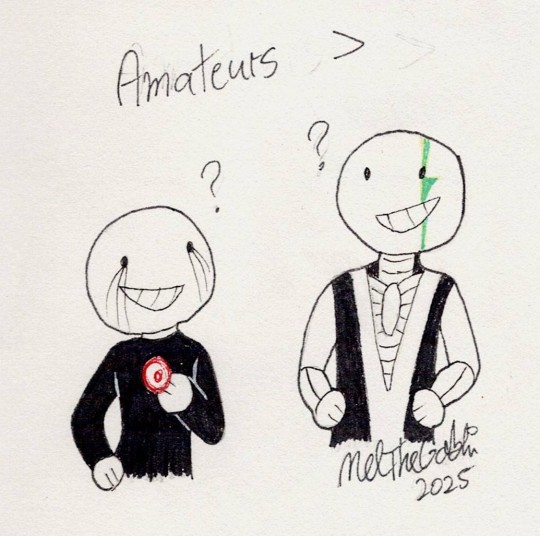


Killer belongs to Rahafwabas G / Gaster!Sans / Echotale Sans belongs to Yoralim/Sansxs Kalen belongs to me / @meeludrawz
#my art#undertale au#utmv#utmv au#lucida's legacy#undertale#utmv oc#undertale aus#killer!sans#killer sans#g!sans#gaster!sans#echotale#something new au#kalen is an idiot#but he's my son <3#kalen sans#kalen!sans
27 notes
·
View notes
Text
ANNOUNCEMENT
My art/content won't be posted here anymore My original content will be posted on my side blog @andomery ReveTale (Undertale) -> @reve-tale Undertale: Lucida's Legacy -> @lucidas-legacy
#my art#undertale#undertale au#original fiction#andomery#revetale#lucida#lucida's legacy#utmv#utmv au
7 notes
·
View notes
Text
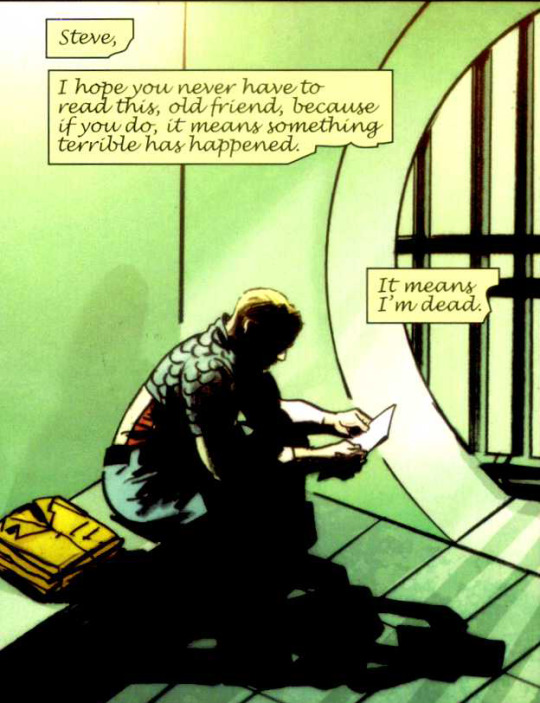
If you're like me, sometimes you need the full text of Civil-War-era Tony's letter to Steve in the event of his death from "What If? Fallen Son" (2009). So here it is in its entirety!
If you notice any typos on my part, please let me know.
I put line breaks wherever the text was broken up, either by being in different sections of a panel or different panels/pages. I preserved the ellipses, though I didn't double them (in many cases a section of text would end in "..." and then the next section would also begin with "..."). I also didn't double up line breaks and ellipses.
Steve, I hope you never have to read this, old friend, because if you do, it means something terrible has happened. It means I'm dead. I suppose it shouldn't come as much of a surprise, really. During my years as Iron Man, I've racked up hundreds of enemies who wanted to do me in… and after recent events, probably a few old friends who feel the same. It's funny, though. I always prided myself on being a futurist--constantly thinking a leap ahead of everyone else. Apparently, that leap wasn't nearly far enough. But this letter is about looking forward--not back. It doesn't matter what killed me. All that matters is what happens next… and the legacy I've left behind. I'm not talking about Iron Man, either. The suit is nothing without the right man inside… and there aren't many I'd trust to pilot. Rhodey. Pepper. Happy. Maybe Jarvis… though he was never really the hero-type. And you, Steve. Whether you believe it or not, I always trusted you. Even during the darkest days--during the war--I never stopped believing in you. No one did. But like I said, this isn't about choosing a new Iron Man. There was a world before him, and there will be one after. This is about my ideas--the plans and inventions that I hoped would make the world a better place. This is about making sure those things don't fall into the wrong hands. I don't even want to imagine the suffering that could cause… That's where you come in it. I need your help, Steve. I need you to keep an eye on things now that I can't anymore--which is a lot to ask, I know, after what I've put you through. Still you're the only one I trust to make certain everything I was working for doesn't fall apart without me… and to ensure that the threats that I wasn't around to predict… don't end up blindsiding us in my absence. Our war may be over, Steve, but we both know that it won't be the last one. When the time comes, the world will still need heroes. And when the fighting is over and history is written… I can only hope that we will be remembered as more than just heroes. I hope that we will be remembered as I will always remember us… As friends.
And the typeface used in the comic is--or is very close to--Lucida Handwriting Light, which used to come free with a lot of Microsoft products.
I also have a rough mock-up of the entire letter.
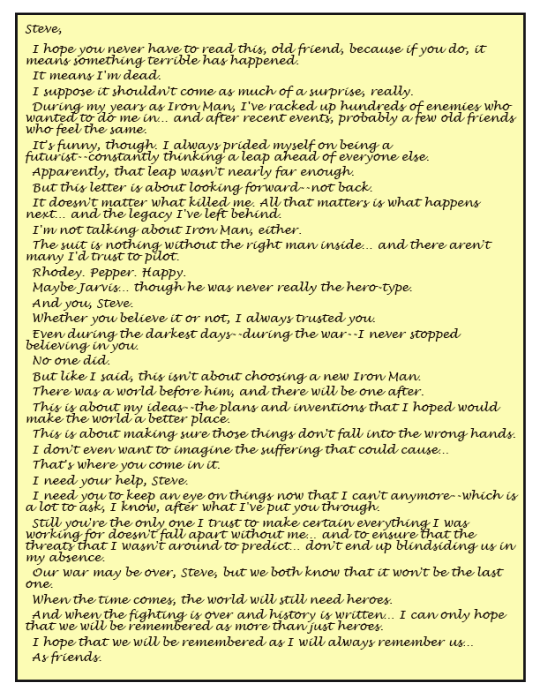
#what if? fallen son#marvel#marvel 616#616#resources#reference#tony stark#iron man#captain america#steve rogers#posts I created#marvel civil war#616 civil war#civil war 616
262 notes
·
View notes
Text
Today I shall be explaining how Edgar (Narrator), Mae (Curator) AND Inferos (TK) came to be.
Everyone buckled in? All ready? Alright! Here we GO—
The Creation Process / History.
Many millennia ago, The Universe was simply a mish mash of chemical compounds. Molecules weren't even established to be, they just simply.. Existed! It's unknown where the existence of everything had originated from. Now, there are many theories that hold up ideas of the origins of everything. Most Famously discussed being, of course, The Big Bang, estimated to have occurred 13.8 Billion years ago.
The Universe allegedly began as a tiny, high-density fireball, which spontaneously combusted and thus expanded as space. The Universe cooled in time, and with cooler conditions The First, simple elements began to form; Hydrogen, Helium and Lithium. Hydrogen being the main factor of the three. Gradually, gravity drew matter together which supposedly formed The First Stars & Galaxies. From here, Galaxies collected into into a mixture of Groups, Clusters & Superclusters, whereas some stars started to die within Supernova Explosions; their chemical remnants begun seeding new generations of stars, bringing their legacies to be long lasting but ALSO enabling the formation of New, rocky Planets. And one of those Planets, of course, just so happened to be Earth.
Now, somewhere, in-between all the kerfuffle, situated within the plentiful explosions and deaths of Stars and such alike , Larger Stars had begun to Collapse at the end of their Life Cycles. This brought into existence the first Black Hole. Now, A Black Hole, By Google Definition; A region of spacetime where gravity is so strong & nothing, including light & other electromagnetic waves, has enough energy to escape it.
The Theory of General Relativity predicts that a sufficiently compact mass can deform spacetime to form a black hole. At the time, obviously, these were a Rare Phenomena in the passing time of Space, and so contact with them involving an involuntary object had a slim chance of creating some Huge Reaction, seeing as Black Holes quite literally "Eat", in layman's terms, anything in its path. Nothing in existence, at that time, had ever had such a Strong Energy Scale to Escape, let alone Combat the likes of a Black hole. So nothing was capable of stopping them on their Daunting Path of Destruction. That is, until the introduction of an unfamiliar, foreign object in spacetime.
┈┈・୨ ✦ ୧・┈┈
Lucidae Ignis in Aeternum, L.I.A.
[ ❝ Lucidae ❞,The term given the Brightest Star of a Constellation, Latin origins; the feminine singular of ❝ Lūcidus ❞, meaning ❝ Bright, Shining ❞ , ❝ Ignis in Aeternum. ❞, Latin origins; Meaning ❝ Fire Forever ❞, or rather ❝ Eternal Fire ❞ ]
This star-like-Giant of the Galaxian Empire was the largest existing ball of burning plasma known currently to Particular Knowledge of some, beating the Current Largest Known Star, UY Scuti, a Red Hypergiant standing at 1.188 Billion Kilometres, and somehow forming to be 156 Trillion Kilometres in size. That, in itself, is large enough to fit Five of our Solar System's within, and then some. It seems impossible, but at the same time. Existence as a whole is nothing far from what one would consider impossible. Yet here we are. Within Galaxies and Galaxies, Universes and Universes filled with who knows what.
Perhaps Stars even Bigger than LIA lie out there. Somewhere. LIA, as been theorised, has been said to of formed from Two Red Dying Hypergiants drawing close enough to one another at similar Low Levels of Combustion & existing at a Semi-Molten state to Weld Together, when Gravitational Forces between the two were strong enough to drawn one another in. This process of welding them to one another causes a sort of Infinitely Regenerative Source of Plasma Energy to power both stars and eventually merge them into one massive Hypergiant reaching lengths beyond general comprehension.
..............................................................................................................................
It just so happens that both LIA, and The Black Hole, which was later on dubbed Nexis, a relatively small black hole compared to ones that may exist today, co-exist in the same region of space, which would inevitably cause their paths to collide, one way or another. Time goes by, space goes on. And it's not long before Nexis's strengthening pull manages to catch LIA in its undefeated fury.
But, being such a large supply of energy, The Strength of Nexis must be pushed to its extremes to be able to reel in this Goliath for its own personal gain. And so, the two fought for their individual, eternal reign. Like warriors. Until both succumbed. They collapsed onto one another. And something new was born.
..............................................................................................................................
In some Stories, Folk Law & Myths carried across galaxies, it's been told through generations that these two Beasts of the Dark may have not been just... heartless monoliths, doing what they did simply because that's how things worked. Without any true, meaningful purpose other than just. To be.
As a matter of fact, It's strongly believed, by the few that tell the tales of the Universe, that these Giants had souls. Souls that had driving motives. Souls that felt for one another. And some found that tale to be as beautiful as it sounds.
And, if those tales were to be found true.. then it surely was. Tales etched into stone, written in old Greek, are the best source we currently have that depicts such a story. After thorough translation, this is what story was once told to be, and laughed at by the faces of many other highly religious figures;
❝ In the Times of Dark and Treacherous, the Lights of the Night were Dark & the Skies were Scary, Humanity was yet to be shaped out of the mud, and everything was Unorganized and Frail. Before our figures of Hierarchy came to be and ruled over our land, Two only dwelled in the Blank Canvas of The Dark. Brave Warriors. Who fought to keep Balance.
Elpída, Guardian of Distant Hope and Eternal Life, she fought for honour, to keep Light burning so the Dark would be luminous.
Maraíno, Executioner of Decay and Damnation, she fought for Power and took Life to Reign.
The Two Warriors Danced a Deadly Dance to Glorify their Ambitions in an Infinite Ballroom. It was a Fierce Battle. It was a Valiant Battle. And it kept Peace.
Their Battle could have been Eternal, everlasting, but at a point they both grew weak. Energy was forced to be used sparingly. Both that once wielded power and thrived off of it had turned that power into a channel for spite, a fuel for meaningless rage, and thus was no longer fruitful.
And once she had become frail, The Light of Elpída was dim. And the Hope she sought out to keep alive felt dismissed.
Maraíno cried out to their rival as they both came to a halt;
' The Light I once seeked from you to take has dimmed. And so it holds no value to me. So tell me, Darling Light, Why do I still seek you? '.
The Guardian answered with but another question;
' The Destruction you brought onto the existence of life has long since stopped as you have grown weaker. And you concentrate your time on my defeat. Yet, Why do I still fight you? '.
The Executioner had no answer to offer. And pondered upon this riddling response. And The Guardian spoke once more.
' Perhaps we fought for our ambitions once long ago, but I don't believe that to be the truth as we speak. ' she said, drawing closer to The Dark. Yet The Executioner did not try to defend itself. She allowed the touch of The Light to meet its faltering visage.
' Perhaps we fight now because we do not wish to be alone. I am the Light that illuminates you. Your soul encapsulates me. I have fought against it.. but now I fight to stay beside it. '. Once again, The Executioner could not reply. But it seemed as true to the two of them, whether they were to come to an agreement on the matter or not.
The battle had ended as suddenly as it had sprouted. The two held a gentle embrace around one another and uttered . And with the last of what they had, a spark in the Universe lit. And The True Empress that breathed life into our bodies had been born d from their dying light. It was born from two set souls, souls that had found their true purpose. To make life flourish. And to leave the Universe with company. With Life. With Hope. ❞
..............................................................................................................................
This tale has long since been forgotten, and remembering it at any point should be taken with a grain of salt. Believe it as simply a mystery of space, or as a story of great ambition. Either way, what remains true is that both entities collided. And with that collision birthed an unusual form of life, something that was capable of capturing, creating, controlling. It was a mighty force.
It's believed, but not confirmed, by some that the fusion of both Hypergiant's actually caused the LIA’s core to become a type of White Hole, or at the very least something similar, as it did not collapse onto itself but instead rebirthed as something entirely new, and phenomenal at that. But the interruption of Plasma from LIA’s outer surface prevented any sort of Wormhole from forming.
It, instead, forced remaining light nuclei to merge with one another simultaneously, forming dozens of heavier nuclei that released enough energy to be able to bond with early specimens of hard light collected together in a nearby nebula ; ultimately creating an infinite, solidified source of energy that had someone managed to become its own organism.
This Theory stands as The Theory of Everlasting Creation, and believes in the existence of an all-powerful, essentially living, thinking organism that holds the ability to create existing, and even non-existing, elements, substances, materials, mixtures and compounds at will, with no finite limitations on how much it may create or be capable of creating, as well as also being able to deconstruct and destroy the prior at the same time.
..............................................................................................................................
With all of this established, we may now bring our focus on this ‘hypothetical’ organism, or some may even refer to it as a Deity of sorts.
In Theory, this natural phenomena has created a God. It cannot die. And it can exist for eternity. With its purpose being to keep balance, and create. If it so chose to take that path.Thus, making it the perfect candidate for a Godly Figure. And in the future, it might just have been considered one by a select few. Early Astronomers who sought out the mysteries of space, perhaps. Who’s to say?
This being would be referred to as “The Creator” when humanity caught onto its presence, which was certainly fitting, considering the circumstances. However, long before humanity even had a name, the being itself had already come to find an alias of its own. It called itself “Mae”. Which would later be established as a word that correlates to “God/Goddess”, or “Beautiful”, in Gaelic/Celtic meanings. Or “Mother” in Portuguese; also oddly fitting. For more reasons than one. Which brings us to our next point:
What she created.
..............................................................................................................................
Now, obviously, there came a point in time where living organisms had begun their own evolutionary pipeline. This was not brought upon the universe by the likes of she. As a matter of fact, this evolutionary advancement is something that fascinated her. Despite being an overpowering organism of creation, these life forms had formed themselves all on their own. She had no involvement with it whatsoever. And that alone caught her attention. In no time, she’d become fixated on this Planet and its independent growth. Even during the early stages of life, she kept a watchful eye on every little detail.
Single-celled organisms were fruitful and multiplied into multicellular life. From here, these organisms branched off into a vast variety of Chordata, which were primarily based in bodies of water and adapted to such in terms of diet and anatomical structure. Her attachment to these organisms grew further as she saw their development now leading into much more complex territory; Tetrapoda now becoming part of the equation as four-limbed vertebrate, which had not only become amniotes as they started to roam the land, but had also began to become more adapted to both aquatic and land based worlds in order to branch of FURTHER than what was initial expected.
The introduction to land brought upon more evolutionary expansion. The planet was now given Mammalia and Primates. They were full-on land dwellers at this point, roaming the Earth freely and seeking out new places to thrive and evolve further than they already had. And from there, amidst the rest of the world’s wonders, we were given the beginning of the Human Race… and they turned out to be a species the god had become quiet.. QUITE.. infatuated with..
She admired them.. From the way they came to be to the fact that they, too, were capable of creating things if they really set their minds to it..
They were interesting little things. She felt linked to them in ways that were difficult to describe.
And through keen observation, taking note of their strengths and their flaws, and discovering what exactly brought them such differentiating characteristics and experiences, she had an idea beginning to spark.
She wanted to create something like them.
She wanted to create an ideal model.. The PERFECT humane specimen..
Something that was so similar to their kind yet so completely different at the same time. Something that had their traits but something she could teach to achieve things like she could.
..............................................................................................................................
So, with that brewing idea in mind, she began to experiment.
Surprisingly, despite Mae being perceived as something to be high and mighty and capable of pretty much anything, there were a lot of failed attempts & mistakes in the process. Obscure looking body shapes, a multitude of mish-mashed limbs, misplaced facial features that made her creations look uncanny.
But the main problem was that despite the effort she put into each individual attempt – none of them were capable of living freely. Which was the beautiful thing about humanity; they had their own desires, thoughts, ambitions and feelings. They did what they wished to do of their own accord. Nothing held them back.
And it had nothing to do with having a functioning mind. Or a beating heart. If anything, things like that were a primary human set-back. She knew this.
But the question was what exactly CRAFTED them into their own, distinct person if it wasn’t the thoughts of the mind or the life pumped into their hearts.
Eventually, though, she discovered that indescribable something simply by digging deeper. Thinking outside of the box, so to speak.
Each life on Earth appeared to have their own respective source of internal light. It was an incomprehensible thing to most, undiscovered by man and embedded deep within the heart & mind. But somehow, Mae was able to wrap her head around its existence.
A soul.
A magical thing. Founded upon clusters of stardust cumulated together in the central core of billions upon trillions spread out across universes.
Every soul was unique to its bodily host. Not a single soul was the same. Each feeling and experiencing things differently to one another.
A soul was something ever changing, that may link with another soul if bonds were grown enough to pull them together. Once a soul had linked with another, it was almost impossible to separate them. Only if the negative forces of attraction between souls grew too fierce would a soul be forced to separate.
Mae had discovered this phenomenon to be Soulmating. And it came in a multitude of different forms. Alongside hundreds and hundreds of differentiating characteristics that made up what a soul was.
These souls were intricate. And beautiful. And it was something Mae came to find precious.
And thus, she set herself the task to try and replicate such a thing. Create that unique essence of life, thriving off of its own undying light.
And eventually, with perseverance, self-encouragement and a hefty amount of elbow grease (despite very much not having elbows),
She did it. She crafted a soul. A perfect soul. A soul full of brilliance and undiscovered mystery. And a body, to keep that soul alive, to give it a face and name. To let it grow as a person. A person. Her own, darling creation. Which she looked upon with pride. And held her hopes high for to achieve the perfection she had perceived. And so, she gave it a name. Amor Aeternus. Which was a mishmash or words curated by the Romans of Earth. Two words, in Latin; Meaning
“Eternal Love”.
That was what it was called. Eternal Love. She had no reasoning as to why she named it this way. But she felt compelled to do so nonetheless.
But oh,
How fitting that name would be… ♡
However that name would one day develop into the man we know now as Edgar Vincent Marlowe... not just a Narrator, but a storyteller...~
..............................................................................................................................
Now, Highlighting THIS aspect;

Amongst all those failed attempts there was merely one out of thousands that was seemingly quite different. To say the least...
One that, miraculously, had a grown consciousness. The ability to live despite, by technicality, being categorized as the unliving. A small soul that formed on its own accord that would never of been noticed because of how fragile and simple it was. Attached to this unflattering malgamation of a body that was just BARELY keeping onto a humanoid figure.
...and yet, despite its perseverance to live; it never was noticed.
In fact, it was completely disregarded... and forgotton.
But this soul saw everything it could of had. And this soul never forgot. Never forgot how its chance at life was taken from hands of boiling flesh and instead given to another. Something more appealing. More successful. More putridly perfect.
And in itself it grew to hate. It grew to be full of jealousy. To be scornful, and full to the brim with resentment towards the being that he could of been. With a want to tear down everything that this Prince of The Stars had acquired and someday take his place. Show the universe that he WAS worthy of that status. He was special & capable enough to experience what this Brother of sorts of his had already experienced.
And so, he gave himself a name. To express his scorching, eternal flame of envious greed in bold. To overdramatize himself and show his self-proclaimed "upper status".
Stella Natum Inferos. (or "Inferos" for short.)
Meaning Star-born Hell Beast.
And this, ladies and gentlemen, is our Keeper of Time. The one who keeps the Wheel Turning and the one who could stop that Wheel at any given moment.
This is the Story of two Brothers, not bonded by blood but the eagerness & naivety of a joint Creator. One, Blissfully unaware and Blessed; Attune to the gift of Giving and a Heart of Gold, a Soul pure and true. The other, Scornfull & Painfully Aware; hateful and seething deep down only wishing for approval, and to be adored.
"The stars made you their own; you are adored and shine bright. I was cast out, sentenced to to be forgotten; denied acknowledgement and stripped of my life. You will always try to find a way to love. I dance with the tangled webs of resentment. You do not know me. I wish I did not live aside you."
And perhaps... this burning hatred held by one shall finally cut through the thin veil that keeps the two apart.
Their story is still being told, after all.....and a Story needs an Ending~
...and ending that may come sooner than possibly anticipated. You'll just have to wait and see.. ♡
☆ ⠁⠁⠂⠄⠄⠂⠁⠁⠂⠄⠄⠂ ⠂⠄⠄⠂✦ ⠂⠄⠄⠂⠁⠁⠂⠄⠄⠂⠁⠁⠂⠄⠄⠂ ⠂☆
#berri stuff#berri rambles about shit#berri lore#edgar marlowe#inferos#tsp#the stanley parable#tspud#tspud narrator#tsp narrator#oc lore#writing#story
35 notes
·
View notes
Note
I'd love Daniel's list of books from chapter 2 of such sweet sorrow! (this is rosepetalfall from Ao3 - a very recent commenter, haha)
Ahhh, I can't thank you enough for your gorgeous, generous comments! They made me smile SO BIG over my morning coffee, I really appreciate the time and thought you took to write them!!
Daniel's books! Of course!
A Time In Rome - Elizabeth Bowen - This is Bowen's 'guidebook' for Rome, where she writes really evocatively about the city and its history and atmosphere and how she imagines its changed over the years. Kinda fits with Chapter 1 and my focus on Paris.
Camera Lucida - Roland Barthes - This is ostensibly meant to be a book on the art of photography, but Barthes turns it into a reflection on grief and losing his mother (by looking at old photos of her) and it's full of nostalgia and thoughts on aging and mortality. I thought Daniel would be drawn to Barthes, as an academic, and to a book that attempts to teach about art, alongside its other themes.
Midnight In Sicily - Peter Robb - Robb is a really interesting author. He's a journalist, and Midnight in Sicily explores the south of Italy through its painting, literature and food to shed light on the legacy of political corruption and violent crime linked to the Mafia's influence. I love the intertextuality and the political writing, and I think Daniel would too. Robb also wrote an influential biography of Caravaggio.
About This Life - Barry Lopez - Lopez is an essayist/naturalist/travel writer who has written really insightfully about climate change. About this life is more a collection of essays about the art of writing and storytelling, combined with some essays on nature and more memoir-style pieces about memory and his own life. As Daniel wrote his own book touching on the climate crisis I thought he'd respect Lopez, and of course, it has memory as a theme again.
Seize The Day - Saul Bellow - This is a collection of short stories and a play, the title story of which features a man who is a failed actor, estranged from his wife and children and forced to re-examine his life. I like the fact that it includes a play and I'm sure Daniel would be able to see himself in the central character.
On The Move - Oliver Sacks - This is Sacks' memoir/autobiography. Sacks was a celebrated neurologist, who wrote extensively about our brains and memory and the weird ways our minds fail us. Sacks also split his life between California, New York and the UK, which I thought Daniel would enjoy. He also was a kind of an unconventional tearaway during his teens and twenties, had problems with drug addiction, and struggled with his sexuality and love affairs. His memoir also touches on his influences, including poets and writers and artists. He also wrote a fascinating article for the NYT announcing his own terminal illness, which wrangles with mortality and his relationship with death, which I think is fascinating bc I think Daniel could write something very similar.
Part of this is me choosing books which are intentionally kinda meta, but I also think they're the kind of texts Daniel, as the kind of writer and man he is, would read and appreciate.
1 note
·
View note
Text
Before the Glitch: “Stylized Repetition” and Gender Performance in the Online Mainstream
By: Andromeda 🌊🪨
In the introduction to her book Glitch Feminism: A Manifesto, Legacy Russell writes, “Online, I sought to become a fugitive from the mainstream, unwilling to accept its limited definition of bodies like my own.” The “real world,” or the world “AFK” (Away From Keyboard) involves an immediate and fixed form of visibility, and thus pressure to conformity that the digital one doesn’t necessarily demand. However, as Russell writes, the “artifice of a simple digital Shangri-La” has been “punctured”– escaping the mainstream isn’t as simple as logging on. As all worlds do, the digital world is dominated by a “mainstream”, one rife with the “incessant white heteronormative observation” that Russell describes in her “AFK” to be fraught with. So what exactly does this digital mainstream look like? How do we “construct and perform” our “gendered self,” as Russell puts it, in the language of social media?
As a university student, meeting people typically demands 3 obligatory pieces of information: name (to be immediately forgotten), major (to be vaguely commented on), and Instagram account (to follow, and thus cement your new acquaintanceship. Also, to remind you of the name you just forgot). Despite what self-proclaimed “free spirits” and “casual-Instagrammers” will tell you, your Instagram is not just a photo-album for you to look back on, or a journal in which to document the events of your life. That’s what photo-albums and journals are for, people! It’s an image of yourself designed for presentation, the digital face you present to old friends and new acquaintances alike: it’s your own curation of exactly how you want to be perceived, neatly packaged in rows of three. On Instagram, “performing [one’s] gendered self” under “incessant white heteronormative observation” is the name of the game. Personally, I would even venture to say that any online presence is an inherently exhibitionistic one. If you disagree with me on that one, fine. Go write about it on your tumblr.
What you can’t argue is that using Instagram, arguably the most popular social media platform today, is an exercise that begs for observation, for engagement, for the imposition of opinions and identifiers. In Camera Lucida: Reflections on Photography, Roland Barthes (one of the only tolerable men that France has ever produced) writes, “every photograph is a certificate of presence.” Let’s for the moment table (read: ignore) the complications of technological tampering on the semiotic-ontological-whatever relationships between photo and subject raised by the likes of Stephen Prince and Lev Manovich (as neither of us have the time for that), and take what Barthes says at face value.
If a photo is a certificate of presence, we can consider Instagram to be a glass case of certificates of your choosing still and pristine as they tell the story of digital you, spectated you, ossified you. And here’s the kicker: you’re not only on display in the case, but you’re on display as the person who curated it. If you’re a pretentious asshole like myself, you can think of these curatorial choices as the metalanguage of your Instagram (I warned you!). What, with whom, and how often you post all exist in the context of your choice to post at all, and the fact that every post has an agenda (regardless of what that agenda might be). Each post is a stylistic choice, a piece added to the puzzle of one’s digital identity.
In Performative Acts and Gender Constitution, Judith Butler (who happens to be the celebrity hall-pass of a friend of mine) describes gender identity as, "an identity instituted through a stylized repetition of acts. Further, gender is instituted through the stylization of the body and, hence, must be understood as the mundane way in which bodily gestures, movements, and enactments of various kinds constitute the illusion of an abiding gendered self."

I feel that this passage (along with facilitating my understanding of the hall-pass thing–I can think of bodily movements of various kinds that I’d like to repeat in a stylized manner with Judith) is easily translated to the idea of gender performance online. What are posts, if not stylized acts? Lighting, pose, caption–every element is designed to, quite literally, cultivate an image. The sharing of posts, how they accumulate and interact, are acts of stylized repetition that, whether we know it or not, construct our digital identities.
As an example, take a look at this TikTok, which outlines a “recipe for a perfect photo dump.” A photo dump is a group of photos collected in one carousel Instagram post, typically designed to look effortless. But the detailed instructions in this post (including one “effortless photo”, an “outfit pic”, and a “personality pic” amongst others) exemplify a guideline for the exact kind of “stylization of the body” (albeit a digital one) that Butler describes, meticulously designed to communicate an identity. Even the arrangement of our Barthesian certificates of presence (the TikToker has graciously numbered each picture, so they may be ordered “perfectly”), is paramount in constructing our digital selves.
“The glitch,” Russell writes, “acknowledges that gendered bodies are far from absolute but rather an imaginary, manufactured, and commodified for capital.” What an unbearably fierce and pithy way to phrase how the body exists in the digital mainstream! From clean-girl to rat girl to coquette girl to messy girl (this one strikes me as particularly ironic–who knew there were so many rules to being messy?), it never fucking stops! These inflexible hole-in-the-wall shapes that we contort ourselves into through our online behaviour generate the same kind of frustration in me that led me to memorize the cool girl monologue in high-school. These trends and their proponents demand of us, as Russell writes, “a gender performance that fits within a binary in order to comply with the prescriptions of the everyday.” Unspoken rules and categories like these are just as, if not more, stifling than those in the mainstream that exists AFK.
Russell’s manifesto calls to mind one of my favourite winners of RuPaul’s Drag Race, Sasha Velour, and her verse in ‘Category Is…’, the song performed by the season’s final four competitors. There are a few lines in there that I think Russell might enjoy:
Wear a crown
Fuck with gender
Bend the rules
Don’t surrender

Sounds about right to me! The next time you see a clean-girl TikToker’s hair tutorial or diet plan or morning routine, just take three deep breaths, and think of Sasha. And you think hard enough, who knows? Maybe the force of your psychic energy will crack her forty-dollar gua sha.
2 notes
·
View notes
Text
Photography
Blog #12
Barthes, R. (1980). Camera Lucida: Reflections on Photography. Hill and Wang. Available at: https://doi.org/10.2307/293004
The Legacy of Roland Barthes’ Camera Lucida in the Anglo-American World Roland Barthes’ Camera Lucida is considered one of the key works in attempts to comprehend the philosophical and the emotional aspects of photography. In this context, Barthes articulates the concepts of ‘studium’ and ‘punctum’ as different levels on which images communicate to their viewers. For them both however, there is some emotional response which is personal: studium encompasses the economic, cultural, political and historical reading of a photograph, whilst punctum encapsulates that ‘prick’ or sensation ‘a scar’ which leaves the viewer. I am intrigued, however, with Barthes’ ideas about photography as a documentation and a form of personalization at the same time. His ideas explain as to how photographs may address the sameness of the issues but also create a sense of particularity, within different viewers. This indeed emphasizes the potential of photography to represent both the individual and the universal worlds.
0 notes
Text
Monday 25 February 1980, at the invitation of the future French culture minister Jack Lang, Roland Barthes attended a lunch hosted by François Mitterrand. As he rallied support for his presidential campaign of the following year, the leader of the Socialist party was in the habit of entertaining Parisian writers and intellectuals at relatively informal gatherings; political cajolery aside, it was said that Mitterrand simply liked to be apprised of new ideas in art and culture. Barthes, however, had wavered before giving in to yet another interruption of his working routine. It may well have been exasperation or boredom (for he was often bored) that made him decide, when the lunch concluded, to clear his head and walk home alone to his apartment on the rue Servandoni.....
If there are critical legacies to Camera Lucida, the first is probably its insistence (not as obvious as it seems) that photographs are always photographs of something. The book's more penetrating influence has certainly to do with photography and mortality: both the memorial uses to which photographs have long been put – one thinks of Victorian mourning portraits, or the profusion of post-9/11 mementos – and the vertigo we can feel in the face of even the most vivid and living subject. But few of Barthes's heirs – and Batchen's essay collection reprints three decades' worth of critical appraisal and envy of Camera Lucida – have ever reproduced or fully accounted for the strange air of searching and susceptibility that permeates his brief "note". As the art critic Martin Herbert has put it, "I don't go looking for 'ideas about photography' in that book; I read it for a certain kind of vulnerability."
Perhaps it is artists and writers who have come closest to capturing and developing Barthes's insights, whether consciously or in parallel projects that explored the mnemonic powers of ordinary snapshots. In his composite photograph Every Page of Roland Barthes's Book Camera Lucida (2004), Idris Khan has presented the book as a blackened palimpsest, its famous images mere blurred phantoms among illegible lines of text. And artists such as Gerhard Richter, Christian Boltanski, Tacita Dean and Fiona Tan have all amassed archives of everyday portraits that owe much of their allure to Barthes's "imperious sign of my future death". In fiction, WG Sebald admitted a profound debt to Camera Lucida; in Austerlitz, the protagonist's search for an image of his lost mother is clearly modelled on Barthes's desire for a glimpse of "the unique being".
1 note
·
View note
Text
Before the Glitch: “Stylized Repetition” and Gender Performance in the Online Mainstream
By: Andromeda 🌊🪨
In the introduction to her book Glitch Feminism: A Manifesto, Legacy Russell writes, “Online, I sought to become a fugitive from the mainstream, unwilling to accept its limited definition of bodies like my own.” The “real world,” or the world “AFK” (Away From Keyboard) involves an immediate and fixed form of visibility, and thus pressure to conformity that the digital one doesn’t necessarily demand. However, as Russell writes, the “artifice of a simple digital Shangri-La” has been “punctured”– escaping the mainstream isn’t as simple as logging on. As all worlds do, the digital world is dominated by a “mainstream”, one rife with the “incessant white heteronormative observation” that Russell describes in her “AFK” to be fraught with. So what exactly does this digital mainstream look like? How do we “construct and perform” our “gendered self,” as Russell puts it, in the language of social media?
As a university student, meeting people typically demands 3 obligatory pieces of information: name (to be immediately forgotten), major (to be vaguely commented on), and Instagram account (to follow, and thus cement your new acquaintanceship. Also, to remind you of the name you just forgot). Despite what self-proclaimed “free spirits” and “casual-Instagrammers” will tell you, your Instagram is notjust a photo-album for you to look back on, or a journal in which to document the events of your life. That’s what photo-albums and journals are for, people! It’s an image of yourself designed for presentation, the digital face you present to old friends and new acquaintances alike: it’s your own curation of exactly how you want to be perceived, neatly packaged in rows of three. On Instagram, “performing [one’s] gendered self” under “incessant white heteronormative observation” is the name of the game. Personally, I would even venture to say that any online presence is an inherently exhibitionistic one. If you disagree with me on that one, fine. Go write about it on your tumblr.
What you can’t argue is that using Instagram, arguably the most popular social media platform today, is an exercise that begs for observation, for engagement, for the imposition of opinions and identifiers. In Camera Lucida: Reflections on Photography, Roland Barthes (one of the only tolerable men that France has ever produced) writes, “every photograph is a certificate of presence.” Let’s for the moment table (read: ignore) the complications of technological tampering on the semiotic-ontological-whatever relationships between photo and subject raised by the likes of Stephen Prince and Lev Manovich (as neither of us have the time for that), and take what Barthes says at face value.
If a photo is a certificate of presence, we can consider Instagram to be a glass case of certificates of your choosing still and pristine as they tell the story of digital you, spectated you, ossified you. And here’s the kicker: you’re not only on display inthe case, but you’re on display as the person who curated it. If you’re a pretentious asshole like myself, you can think of these curatorial choices as the metalanguageof your Instagram (I warned you!). What, with whom, and how often you post all exist in the context of your choice to post at all, and the fact that every post has an agenda (regardless of what that agenda might be). Each post is a stylistic choice, a piece added to the puzzle of one’s digital identity.
In Performative Acts and Gender Constitution, Judith Butler (who happens to be the celebrity hall-pass of a friend of mine) describes gender identity as, “an identity instituted through a stylized repetition of acts. Further, gender is instituted through the stylization of the body and, hence, must be understood as the mundane way in which bodily gestures, movements, and enactments of various kinds constitute the illusion of an abiding gendered self.”
I feel that this passage (along with facilitating my understanding of the hall-pass thing–I can think of bodily movements of various kinds that I’d like to repeat in a stylized manner with Judith) is easily translated to the idea of gender performance online. What are posts, if not stylized acts? Lighting, pose, caption–every element is designed to, quite literally, cultivate an image. The sharing of posts, how they accumulate and interact, are acts of stylized repetition that, whether we know it or not, construct our digital identities.
As an example, take a look at this TikTok, which outlines a “recipe for a perfect photo dump.” A photo dump is a group of photos collected in one carousel Instagram post, typically designed to look effortless. But the detailed instructions in this post (including one “effortless photo”, an “outfit pic”, and a “personality pic” amongst others) exemplify a guideline for the exact kind of “stylization of the body” (albeit a digital one) that Butler describes, meticulously designed to communicate an identity. Even the arrangement of our Barthesian certificates of presence (the TikToker has graciously numbered each picture, so they may be ordered “perfectly”), is paramount in constructing our digital selves.
“The glitch,” Russell writes, “acknowledges that gendered bodies are far from absolute but rather an imaginary, manufactured, and commodified for capital.” What an unbearably fierce and pithy way to phrase how the body exists in the digital mainstream! From clean-girl to rat girl to coquette girl to messy girl (this one strikes me as particularly ironic–who knew there were so many rules to being messy?), it never fucking stops! These inflexible hole-in-the-wall shapes that we contort ourselves into through our online behaviour generate the same kind of frustration in me that led me to memorize the cool girl monologue in high-school. These trends and their proponents demand of us, as Russell writes, “a gender performance that fits within a binary in order to comply with the prescriptions of the everyday.” Unspoken rules and categories like these are just as, if not more, stifling than those in the mainstream that exists AFK.
Russell’s manifesto calls to mind one of my favourite winners of RuPaul’s Drag Race, Sasha Velour, and her verse in ‘Category Is…’, the song performed by the season’s final four competitors. There are a few lines in there that I think Russell might enjoy:
Wear a crown
Fuck with gender
Bend the rules
Don’t surrender
Originally posted by ivanv
Sounds about right to me! The next time you see a clean-girl TikToker’s hair tutorial or diet plan or morning routine, just take three deep breaths, and think of Sasha. And you think hard enough, who knows? Maybe the force of your psychic energy will crack her forty-dollar gua sha.
0 notes
Text
6TH August in the Medical History
Pioneering Work by William Hyde Wollaston in Chemistry and Medical Science

I. Introduction
Eminent English chemist William Hyde Wollaston (1766–1828) made ground-breaking discoveries and developments that had a profound impact on both chemistry and medicine. His lifetime of work, which spanned the late 18th and early 19th centuries, created the groundwork for contemporary metallurgy, spectroscopy, and crystallography. Palladium and rhodium’s groundbreaking isolation by Wollaston changed catalysis and medical applications. Additionally, he improved scientific illustration and microscopy through the creation of the Reflecting Goniometer and the Camera Lucida, which had an impact on medical imaging methods. This article explores Wollaston’s varied contributions and demonstrates his crucial influence on the fields of chemistry and medical science.
II. Early Life and Education
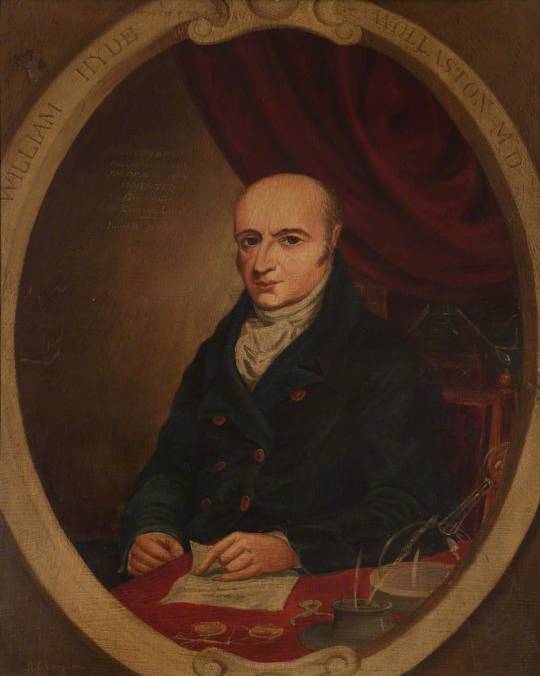
William Hyde Wollaston, born August 6, 1766, in East Dereham, England, showed an early aptitude for science. He studied medicine at Cambridge’s Gonville and Caius College but gravitated toward chemistry and natural sciences under the guidance of mentor John Gough. Although he didn’t complete his medical degree, his formative years at Cambridge nurtured his analytical skills and curiosity. His subsequent significant contributions to chemistry and medicine were built on the foundation of these early experiences.
III. Contributions to Chemistry
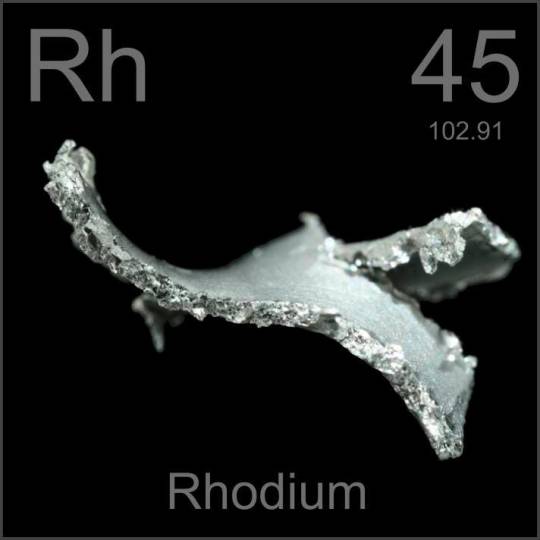
William Hyde Wollaston made significant and enduring contributions to the discipline of chemistry that will always be remembered in the history of science. His creation of the Reflecting Goniometer, a ground-breaking tool that revolutionized crystallography, is among his most famous accomplishments. This tool made it possible to measure crystal angles precisely, which advanced our understanding of mineral structures and molecular groupings. The Reflecting Goniometer completely changed the field by giving scientists an effective tool to decipher the properties of crystalline materials.
In 1803 and 1804, respectively, Wollaston made the extraordinary discoveries of two new elements: palladium and rhodium. He was able to successfully extract these components from platinum ore because to his painstaking procedures and creative approaches. The periodic table was widened by these discoveries. PAlloy and rhodium were used in a variety of chemical processes that were important for the development of pharmaceuticals and other industries, as well as catalytic converters that reduce the environmental impact of automotive emissions.
Wollaston’s creation of the Camera Lucida further displayed his skill in interdisciplinary research by uniting art and science. By enabling researchers to trace tiny specimens, this tool aided in the documentation and dissemination of scientific discoveries and allowed for correct scientific depiction. Modern microscopy and imaging methods owe their development largely to Wollaston’s contributions. Overall, William Hyde Wollaston’s inventiveness and intellectual prowess continue to motivate researchers and influence chemistry and other sciences.
IV. Medical Applications

Medical uses for Wollaston’s contributions to chemistry, such as the isolation of palladium and rhodium, can be found in prosthetics, dental materials, and cutting-edge spectroscopy-based diagnostics.
V. Legacy and Recognition

His groundbreaking contributions to chemistry and medicine, which influenced modern scientific understanding, are what will live on as Wollaston’s lasting legacy. His contributions to crystallography, palladium, and rhodium continue to have an impact on medical technology, catalysis, and materials science. His innovations of the Camera Lucida and the Reflecting Goniometer enhanced scientific illustration and microscopy, having an impact on many fields. Wollaston’s discoveries provided the groundwork for significant medical improvements, and his thorough research methodology continues to serve as a standard for scientific investigation. His accomplishments include participation in esteemed organizations and long-lasting awards, which have solidified his place as a trailblazing figure in the annals of scientific history.
VI. Conclusion

In conclusion, William Hyde Wollaston made significant contributions to chemistry and medicine that will always be remembered in the history of science. His inventiveness, demonstrated by discoveries like palladium and the Reflecting Goniometer, has sped up the development of materials, medical equipment, and catalysis. As we look to the future, contemporary technologies that build on Wollaston’s legacy include QMe Healthcare System Software, which improves medical diagnostics, patient care, and research. Scientists are still motivated by Wollaston’s legacy, and his collaborative method of doing multidisciplinary research serves as an example, highlighting the revolutionary potential of fusing scientific research with cutting-edge technology for the benefit of humanity.
0 notes
Text
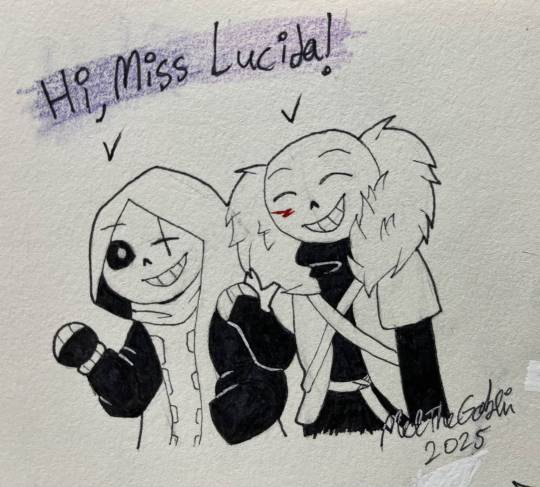
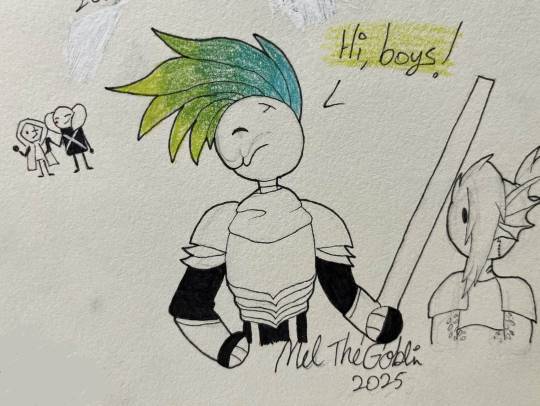
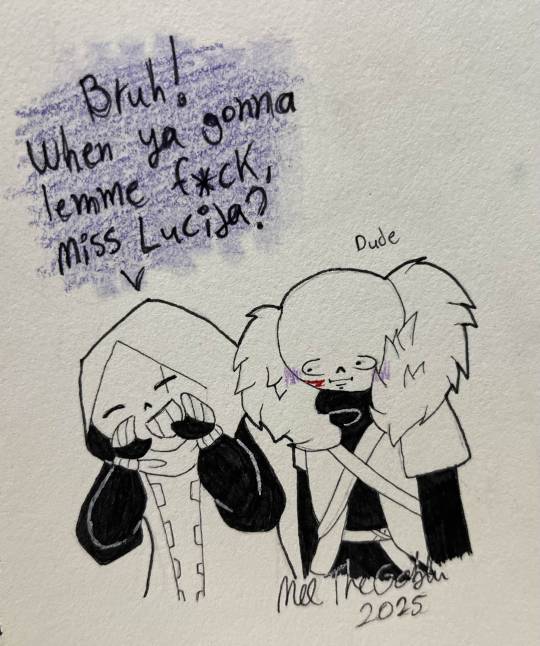
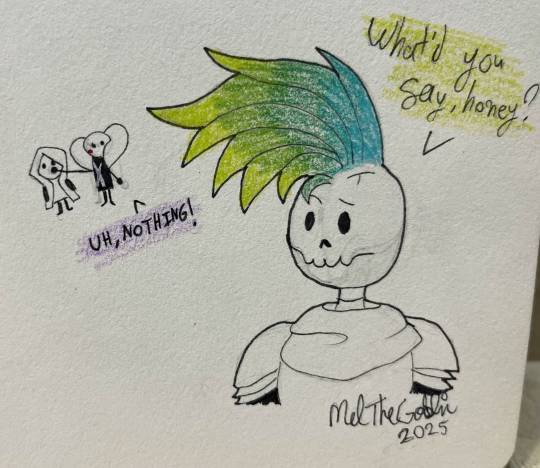
Bonus:
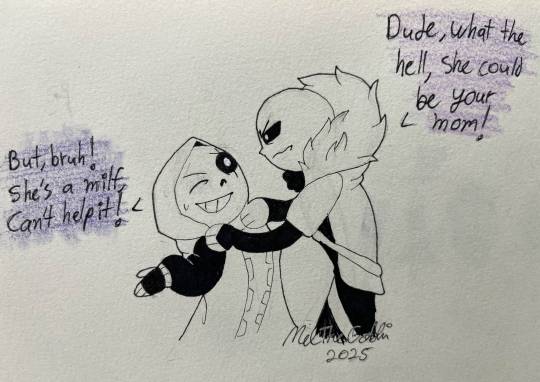
Based on this: Eep Cross belongs to Jakei / Jael Penaloza Epic belongs to Yugogeer012 Lucida belongs to me / @meeludrawz
#utmv#epic sans#epic!sans#cross!sans#xtale cross#xtale sans#epictale#lucida's legacy#my art#utmv oc#utmv au#undertale#undertale au
20 notes
·
View notes
Text

NAME: Lucida W.D. HEIGHT: 5'11'' / 1m80 GENDER: Female SPECIE: Skeleton LIKES: - Her sons (Sans & Papyrus) - Her husband (Gaster) - Training - Lemonade - Dogs DISLIKES: - Violence / Bullies - Blood - Coffee - Cats - Fire Being a royal guard, she regularly wears her armor Her weapon is a metal bar. When using her powers, she lifts her bar just a little then hit the ground with it, making bones or blasters appear.


#if you like please reblog#lucida's legacy#lucida#undertale#undertale au#sans#sans undertale#papyrus#my art#undertale oc#undertale original character
12 notes
·
View notes
Text
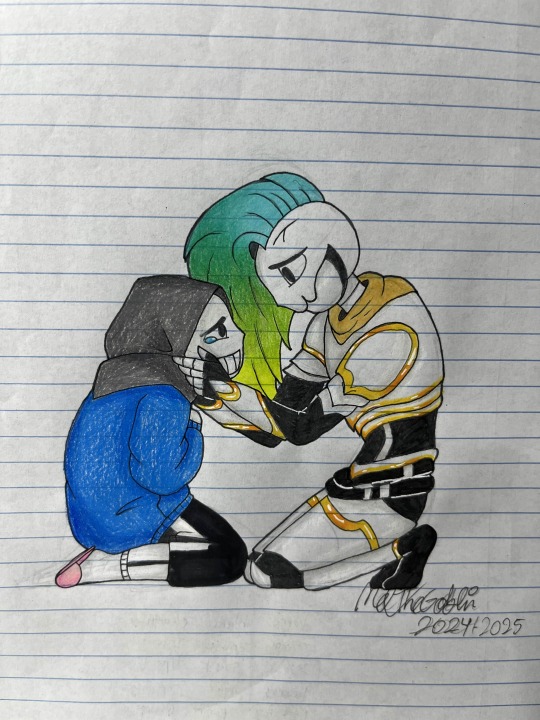
I thought Classic needed some encouragement from his mother, he appreciates Lucida even if she's not from his AU / AT
Lucida belongs to me / @meeludrawz
#sans undertale#undertale oc#undertale aus#undertale au#my art#classic sans#utmv#utmv oc#utmv au#lucida's legacy#lucida
9 notes
·
View notes
Text
Here's Inky!










Undertale: Lucida's Legacy/Lucida belongs to me Ink belongs to Comyet/Myebi
#if you like please reblog#undertale#undertale au#utmv#utmv au#utmv oc#lucida#lucida's legacy#ut au#undertale aus#ink sans#ink!sans#my art
23 notes
·
View notes
Text
Lucida's sons

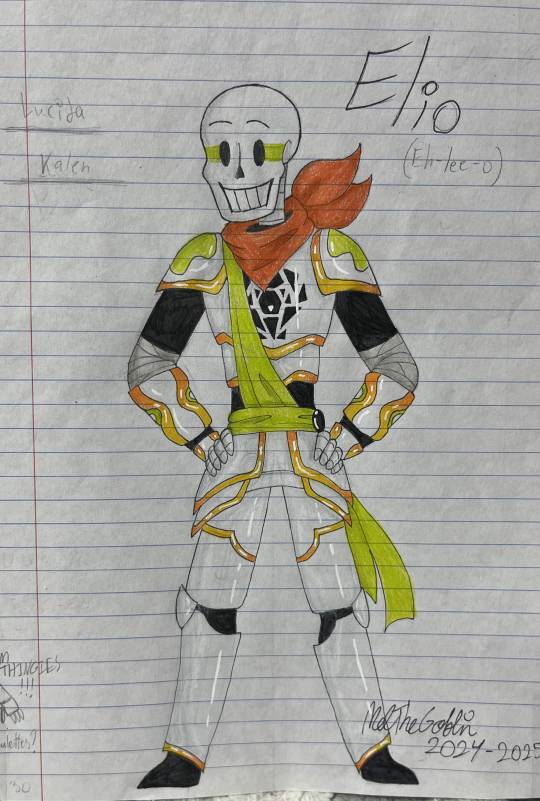
Kalen took me 3 fucking years to finish I can't even- I sketched him in 2023, did his lineart last year and only, ONLY colored him a few days ago- I gotta slap myself
Anyways, meet Kalen and Elio! More info about them under the cut:
- Kalen -
Royal guard, like his mom, Lucida and his brother, Elio.
AU is similar to the OG but instead of both parents dying and leaving him to deal with raising Papyrus at a very very young age, only his father, Gaster, is dead. Which means Kalen still had to live his childhood because Lucida was there.
A bit too confident, doesn't have 1hp, very skilled in combat, though he's still a bit lazy sometimes and doesn't put all efforts into said combats
Besties with Undyne and Elio. All three of them were trained together, by Lucida
Always wear half of his armour because he's an idiot and kind of rebellious... Also to show off his ribcage to his fanclub. The green fabric represents his mother. Has a lion on the back of his cape/coat just like Elio
Yes, he has a fanclub, which makes him believe that he's attractive. He also thinks the members of his fanclub are more important than his duty, which annoys his mom, Undyne and Elio.
Since his mother packed all Gaster's stuff into the garage, so she could move on from her loss (and also because she's not a scientist and can't work with those things), Kalen never got "curious" about sciences. So his favourite subject and passion is astronomy
- Elio -
Royal guard too! Very proud of it and takes it very seriously
Doesn't remember his father, his family has always been him, Kalen and Lucida
Less patient than OG Papyrus, and more angry, not that much but he's often annoyed by the immaturity of his older brother. Won't hesitate to smack Kalen's skull to make him understand something
Also besties with Undyne
Wears ALL his armour very proudly, and very proud to show off the green fabric that represents his mother, the head of the royal guards. The lion on his chestplate represents the symbol of the royal guards.
Monster Kid is fan of him and Undyne, MK's not fan of Kalen
Knows how to cook more than spaghetti!! Lucida taught them all three of them after she came back home with kitchen walls covered in tomatoes...
Was scared of dogs, but ever since his mom helped him face that fear, he wants a pet dog like humans on the surface! Maybe a cat too!
#sans oc#utmv#undertale oc#undertale aus#undertale au#papyrus oc#utmv oc#utmv au#my art#lucida's legacy#lucida
4 notes
·
View notes
Text
🌻Intro post🌻

Hi, I'm Mel or Meelu! :D I create stuff or reblog a lot! EVERYTHING I WRITE IS ON HIATUS AS I'M TRYING TO SAVE ENOUGH TO BUY MYSELF A SMART TYPEWRITER THANK YOU <3 - I draw requests only for my mutuals and friends because I'm too busy
Since I reblog a lot! - If you wish to see my art, it's all under #my art or there's my sideblogs for some of them! @lucidas-legacy (Undertale) @tmntnextgen (TMNT) @andomery (Original work)
My writing is all tagged under #my writing or you can always head out to my A03! My fav fandoms: It's somehow always a loop, I always come back to them in the span of a year or two 🌺Andomery Content🌺 - @andomery - A03 (Oneshots of my main characters) 🌌Undertale Content🌌 - @lucidas-legacy - Ethereal (A03 Fanfic, Bad Sanses x Reader, on hiatus) 🐢TMNT Content🐢 - @tmntnextgen 🐀MHA Content🐀 - Masterpost - New Rehab Program (P1) / A03 (Shigaraki x Reader, on hiatus) - Shine a light (Shigaraki x Reader, on hiatus) 💙 FNAF Content💛 - Unexpected Attraction (A03 Fanfic, Sun & Moon x Reader, on hiatus)
🩷DIVIDERS THAT I USE ARE FROM @cafekitsune 🩷
Updated on: 26 April 2025
4 notes
·
View notes